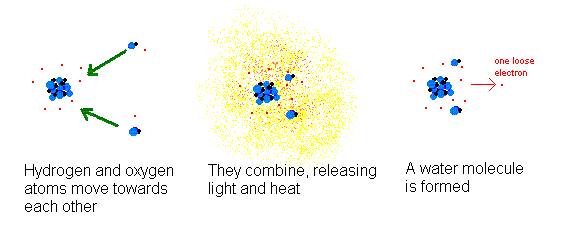Power SystemWhat are possible power sources for satellites? |
When atoms of the two gasses hydrogen and oxygen are put next to one another, they spontaneously combine to form water. This combination results in the release of a lot of energy and lets an electron loose temporarily.

In a fuel cell, the hydrogen and oxygen are separated by a membrane. The membrane captures the free electrons during the chemical reaction that forms water, which in turn powers anything hooked up to the fuel cell. It also releases some heat.
Fuel cells are a remarkable power source. They store energy in two naturally occurring elements (oxygen and hydrogen, which are already in our atmosphere) and form a single waste product (pure water). Refueling a fuel cell means providing more hydrogen and oxygen. With an external source of electricity such as a solar panel, one can split the waste water back into its component parts and use it again as fuel! Or, as they did in the Apollo missions, you can drink the water.
Fuel cells have been in use in the space program for a long time. They went up with the first Apollo astronauts since they could last longer than traditional batteries and didn't have any expensive radioactive parts.
Unfortunately, fuel cells are very heavy and it takes a fair amount of propulsion fuel to place one into space. Fuel cells that are large enough to provide energy for very long space missions would require a lot of fuel or an external power source to provide energy to resplit the water back into hydrogen and oxygen. Lots of fuel is expensive to get into space, and an external power source means adding solar panels. In many cases, it is better to just use the solar panels to power the spacecraft.
DS1 does not use fuel cells.
![]()
What are solar panels?
What happens to a ship when it runs out of power?
How does DS1's electrical system work?
What is an atom?
![]()
How do batteries work?
What's an electron?
What's electron flow?
![]()